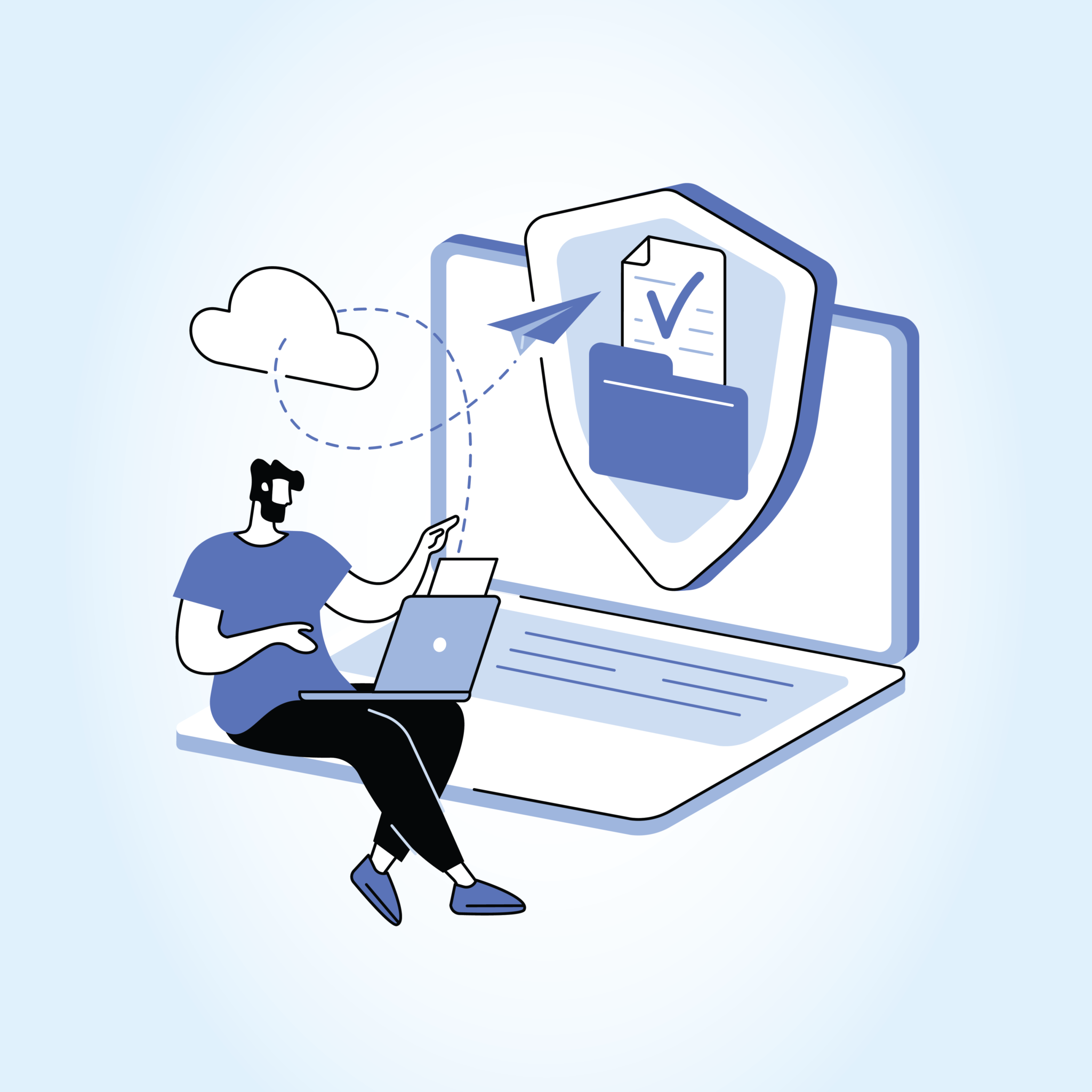With the increasing use and reliance on technology, it is becoming more important than ever to be aware of secure online file-sharing practices. In 2022, a staggering 75,099,482 data records were breached due to various security issues.
If you are a business owner, you know how important it is to ensure that any files you share with partners, suppliers and customers are secure. In today’s highly competitive and fast-paced business setting, this task can be challenging. However, there are a number of ways that you can keep your files secure.
Let’s take a look at what you need to do in order to protect business files from prying eyes and leaks.
10 Best Practices To Follow
1. Use secure protocols for file transfers
The best way to ensure that your files are secure when sharing is by using secure protocols such as SFTP (Secure File Transfer Protocol). This protocol ensures that all data sent between two parties is encrypted, making it impossible for anyone else to intercept or view the information being shared. Additionally, use VPN (Virtual Private Network) connections whenever possible so that all traffic between two computers remains encrypted and private.
2. Manage access control
With the new dynamic of flexible work, employees are accessing business information from multiple devices. With this ease of access comes an increased risk that important data is not properly protected against unauthorized use. To combat this growing risk, businesses must ensure they have implemented robust measures for managing user permissions to files on a granular level – providing different levels of access based on individual roles in the organization, and groups with certain privileges provided by their job titles within the company.
3. Use encryption
When you encrypt your files, you are adding a layer of security and protection over your data. Encryption prevents unauthorised people from deciphering your content without the correct keys. This means that even if someone manages to gain access to your files, they won’t be able to decipher what they contain without the correct key or password. You can also encrypt emails containing sensitive data so that even if the email gets intercepted en route to its destination, the contents remain safe from prying eyes.
4. Use strong passwords
Securing your data with strong passwords is the key to keeping it safe. Passwords should be at least 8 characters long containing, a variety of letters, numbers, and special characters. The more complex your password is, the harder it is for hackers to break into your accounts.
5. Use two-factor authentication
Two-factor authentication (2FA) adds an extra layer of security by requiring users to enter both a username and password as well as another piece of information such as a biometric factor like facial recognition, fingerprint scanning or an OTP sent via text message or email before being granted access into an account or system. This helps reduce the threat posed by malicious actors who may try to break into accounts without authorization by providing additional proof that someone actually accessing the account has permission from its rightful owner first.
6. Set preview limits to files
Keep your data secure and organized with expiration dates for sharing! It’s better to set boundaries on when certain files can be accessed by clients provides proactive security, as well as keeps unnecessary clutter down. When the clock runs out, their access to that file is cut off – giving you peace of mind and more control over your items.
7. Limit file access to groups
The key to a successful file structure is limiting access. Create groups that are based on departments or job functions, and only share access to those files with those groups. By implementing these two controls, your team will be well-equipped for navigating their own workspace effectively and efficiently.
8. Educate and train employees on how to use your secure file-sharing solution
Investing in your organisation’s secure file-sharing software isn’t only an essential security measure – it also pays dividends when time is taken to ensure all staff understand how best to use the system. Without proper training and education, users can become frustrated and opt for less-secure workarounds which could compromise data protection measures.
9. Check that your file-sharing software complies with your overall security plan
Secure file transfer is an essential part of a comprehensive corporate security strategy, but if it’s not integrated with the rest of that system then your data may be more vulnerable than you think. Even taking all possible precautions won’t help if users make mistakes due to a lack of understanding when navigating different software systems. Opting for one unified solution can shield against both malicious attacks and user errors.
10. Develop a record retention policy
When it comes to secure file sharing, record retention is often overlooked. To avoid potential issues during an audit and reduce security risks associated with unnecessary documents, you need to develop a clear policy for how long records are kept in accordance with industry or regulative requirements.
Keeping files even after they have become irrelevant increases the risk of the breach without any benefit – so don’t keep them just because you can!
As the modern workplace continues to become adaptive, now is the time for business owners to ensure that their data remains in their control. That’s why we’ve developed Siccura File, a solution that is designed to keep all your business files safe, secure and in your control. So, no matter where your data travels, business files continue to stay locked and in your control.
